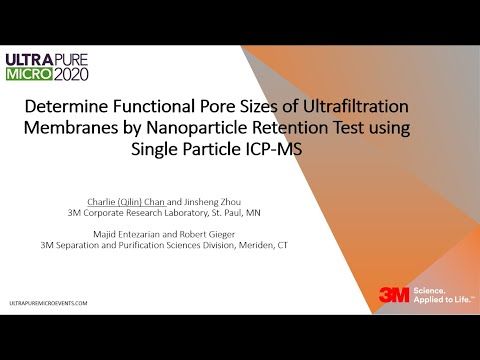Profiling nanoparticles down to 10 nm in a UPW polishing system by two different particle counters
Date Published 2019 | UPW journal archive
To access our resources you will need to be a member of UltraFacility, log in to your account or purchase a membership to view this content.
Nanoparticle contamination of ultrapure water (UPW) for microelectronics fabrication is expected to significantly decrease the yield and reliability of semiconductor devices. Tight nanoparticles control poses a technical and analytical challenge, especially in the particle size range down to a few nanometres. Most state-of-the-art online particle counters do not address the needs of advanced microelectronics manufacturing with critical particle sizes below 20 nm. Therefore, understanding of sources of nanoparticle contamination and strategies for control is limited. This study aims to profile nanoparticles ≥10 nm in a full-scale UPW polishing system after each process step using two novel particle measurement systems: an optical particle counter and an acoustic particle counter. For the first time, the performance of a whole UPW polishing system, including a Reverse Osmosis (RO) unit in terms of particle rejection, was investigated. Both particle counter instruments were evaluated with positive results. A statistical analysis was carried out to compare the significance of the particle counts achieved by the two different detection principles. Profiling throughout the UPW polishing system revealed that both instruments measure particle concentrations in the same range. The data is consistent and shows a clear trend: ion exchange mixed bed, Reverse Osmosis (RO) and ultrafiltration remove particles and represent sinks for nanoparticles ≥20 nm. The removal of nanoparticles between 10 nm and 20 nm is limited in this case however, especially for the final ultrafiltration. Scanning electron microscopy (SEM) with elemental analysis demonstrated that the particle chemistry was diverse. This indicates that different particle chemistries and particle properties might have influenced the particle counts. The results contribute to the advanced understanding of nanoparticle behaviour in UPW and provides more confidence in terms of monitoring at the lower particle range. This article was originally published in the Ultrapure Micro Journal in March 2019.
Related content
Semiconductors: Driving Innovation and Changing the World
THM – A Novel Sustainable Approach as a Global Solution for UPW Applications

Determine functional pore sizes of ultrafiltration membranes by nanoparticle retention test using single particle ICP-MS
U-PURTM – A Metal-Free Combination of Several UPW Polishing Steps in a Multifunctional Reactor for the Removal of TOC and H2O2 Traces
Back to results